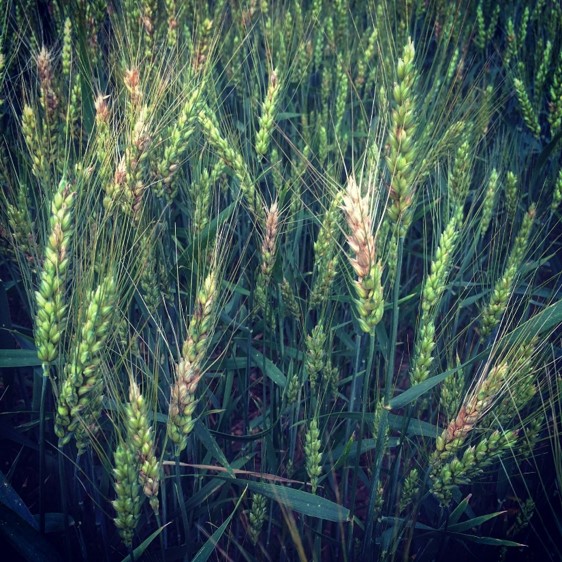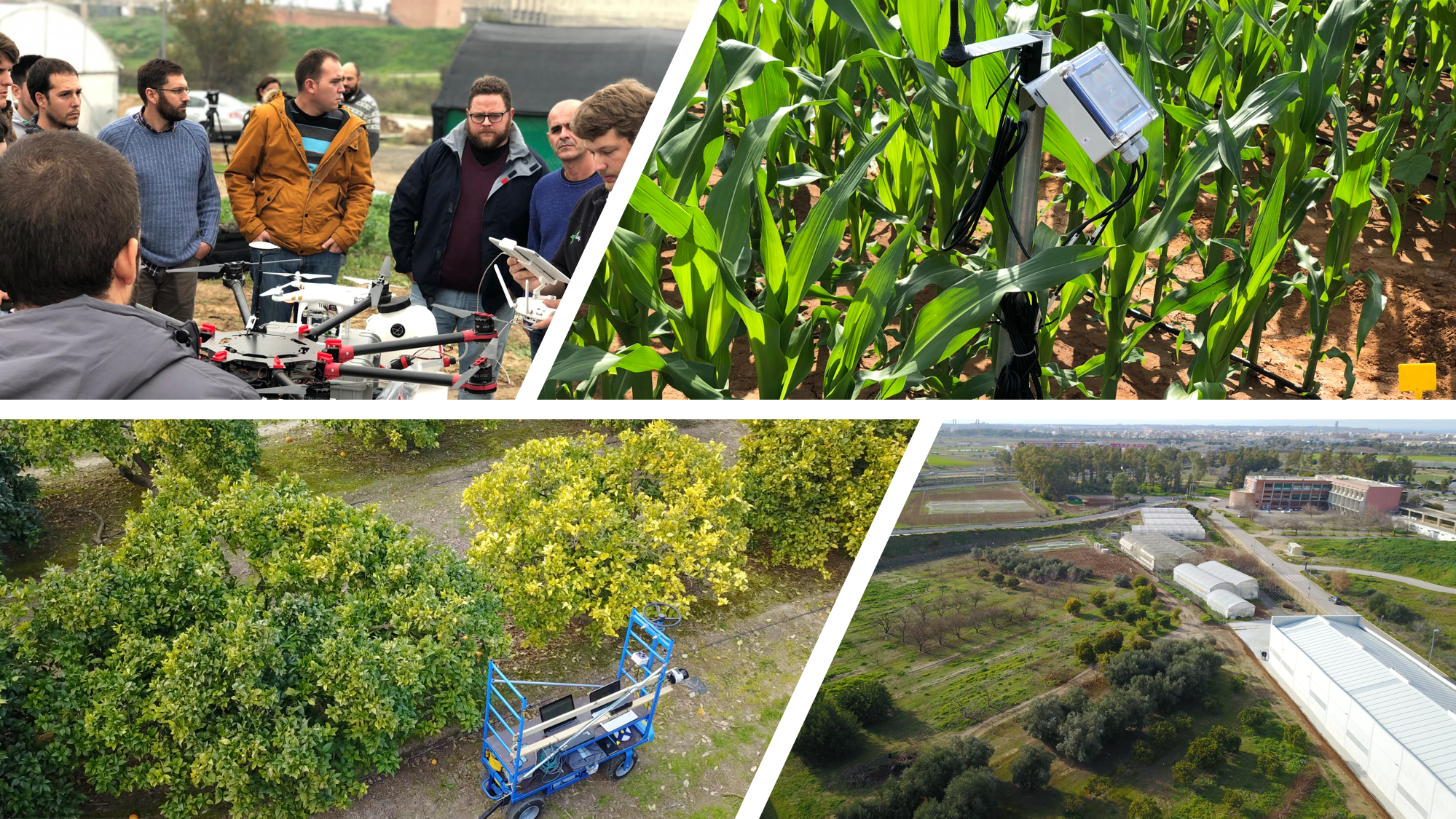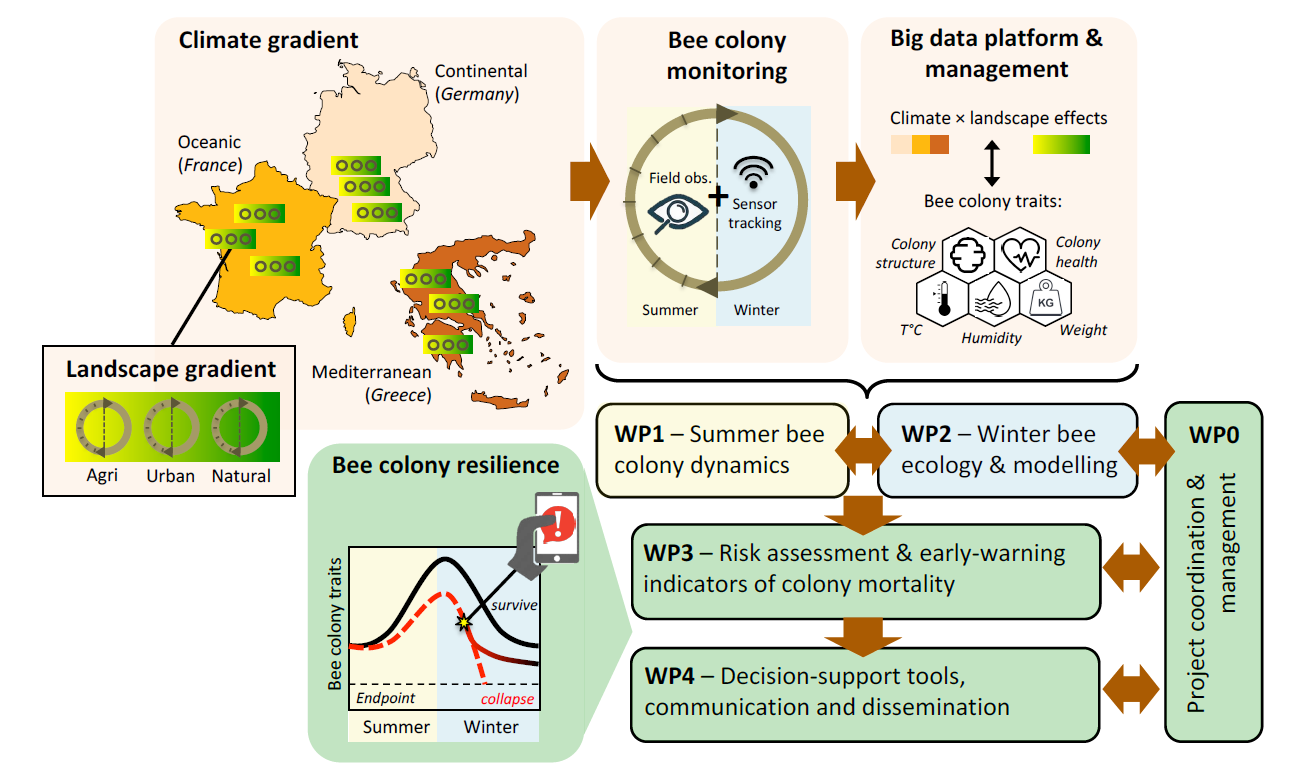
Introduction
POSHMyCo will establish for the first time a novel solution to reduce the risk of mycotoxin contamination in food products originated from barley and wheat grains by adopting smart farming technologies. A system for the forecast and detection of the spatial distribution of FHB in the field, will be developed to predict the spatial distribution potential of mycotoxin contamination. Recommendation will be made for preventive site specific spraying (PSSS) of Fusarium fungicide in combination with selective harvest, aiming at reducing the risk of mycotoxin contamination in wheat and barley grains, which is expected to maximize the yield price, while minimize the risk to human health and livestock. The PSSS will reduce the risk of crop infection with Fusarium Head Blight (FHB) during the growing season, hence, reduces the risk of mycotoxin contamination of harvested grains consequently. Selective harvest will allow the grain harvested by a combine harvester to be sorted into three categories of healthy, slightly/moderately contaminated and contaminated classes. They will be used as human food, animal feed and bio-energy source, respectively. This project will increase farming profitability and reduce environmental footprint and human risk related to consuming unhealthy food products originated from barley and wheat grains.
Background
Fusarium species are the main cause of trichothecene type B contamination in cereals. F. graminearum is considered being the predominant pathogen causing Fusarium Head Blight (FHB) in many countries. FHB can also cause indirect loss, because the fungus contaminates grain with potent mycotoxins, especially deoxynivalenol. Mycotoxins are considered having a significant impact on food and feed safety. Currently, producers do not have a validated methodology to determine toxin contamination levels before harvesting the grain. Accordingly, they do not sort grain into different heath categories during crop harvest. The project will establish for the first time a novel solution to reduce the risk of mycotoxin contamination in food products originated from barley and wheat grains by adopting smart farming technologies. A system for the detection of the spatial distribution of Fusarium Head Blight (FHB) in the field, will be developed to predict the spatial distribution potential of mycotoxin contamination. Recommendation will be made for preventive site specific spraying (PSSS) of Fusarium fungicide in combination with selective harvest, aiming at reducing the risk of mycotoxin contamination in wheat and barley grains, which is expected to maximize the yield price, while minimize the risk to human health and livestock. The PSSS will reduce the risk of crop infection with FHB during the growing season, hence, reduces the risk of mycotoxin contamination of harvested grains consequently. Selective harvest will allow the grain harvested by a combine harvester to be sorted into three categories of healthy, slightly/moderately contaminated and contaminated classes. They will be used as human food, animal feed and bioenergy source, respectively. This will result in not only economic benefits to farmers by selling their yield with higher price, but also social benefits due to reducing the risk of human health by eating healthy grain-originated food products and also for feeding the livestock with non-contaminated fodders. The PSSS will also lead to reduce the amount of agrochemicals applied into the environment. Therefore, this project will increase farming profitability, and reduce environmental footprint and human risk related to consuming unhealthy food products originated from barley and wheat grains.
Mycotoxins are considered having a significant impact on food and feed safety. Currently, producers do not have a validated methodology to determine toxin contamination levels before harvesting the grain. Accordingly, they do not sort grain into different heath categories during crop harvest. The project will establish for the first time a novel solution to reduce the risk of mycotoxin contamination in food products originated from barley and wheat grains by adopting smart farming technologies. A system for the detection of the spatial distribution of Fusarium Head Blight (FHB) in the field, will be developed to predict the spatial distribution potential of mycotoxin contamination. Recommendation will be made for preventive site specific spraying (PSSS) of Fusarium fungicide in combination with selective harvest, aiming at reducing the risk of mycotoxin contamination in wheat and barley grains, which is expected to maximize the yield price, while minimize the risk to human health and livestock. The PSSS will reduce the risk of crop infection with FHB during the growing season, hence, reduces the risk of mycotoxin contamination of harvested grains consequently. Selective harvest will allow the grain harvested by a combine harvester to be sorted into three categories of healthy, slightly/moderately contaminated and contaminated classes. They will be used as human food, animal feed and bioenergy source, respectively. This will result in not only economic benefits to farmers by selling their yield with higher price, but also social benefits due to reducing the risk of human health by eating healthy grain-originated food products and also for feeding the livestock with non-contaminated fodders. The PSSS will also lead to reduce the amount of agrochemicals applied into the environment. Therefore, this project will increase farming profitability, and reduce environmental footprint and human risk related to consuming unhealthy food products originated from barley and wheat grains.
Main project activities
POSHMyCo attempts to establish an integrated ICT solution of sensing, modelling and control to reduce DON and subsequently decrease the human and livestock risks to mycotoxin exposure, while increasing the farmer profitability. This will be achieved through a combined solution of PSSS and SH, based on:
- An on-line measurement protocol of FHB in barley and wheat using a novel multi-sensor data fusion approach.
- New algorithms to quantify mycotoxin in barley and wheat grains based of infield measured FHB.
- Spatial information on soil and crop acquired by exploiting IoT-based sensor technologies.
- Advanced computational methodologies for data fusion and decision-making in order to constitute a fully decision supported loop of PSSS and SH.
- A user-friendly interface platform.
- A cloud-based framework for extracting hidden patterns of data.
- Data management and processing using open source software tools such as QGIS, Hadoop, or Apache Spark.
- Data visualization for faster actions and communicate findings in constructive ways.


Expected social impact
Mycotoxins have a significant impact on food safety. Overall, foods contaminated with aflatoxins present a clear food security threat regarding their impact on human health, especially concerning the established causal association with liver cancer, synergistic effects with hepatitis B, and potential association with growth inhibition and immune system suppression. Securing clean of mycotoxin contaminated grains will reduce the risk to human health, leading to improved food safety. Furthermore, reducing the amount of pesticide by PSSS decreases the risk of undesirable side effects on human food, water and natural ecosystems and contributing strongly to improved society welfare.
Implementation and plans to reach target groups
POSHMyCo will address the following target groups: (a) Stakeholders: Communities, organisations and individuals (e.g., farmers, agronomists, service providers) who will co-create new and improved ADDFerti VRFI solution (b) Governance: Policymakers who have an interest in improving agrifood impact using data, and (c) Influencers: Media, standards bodies & research institutions who are interested in ADDFerti results. ADDFerti will achieve the above objectives by using a multi-platform, multi-channel communication strategy to carry out diverse and novel activities in order to create compelling content and events of the project and the challenging environment of data-driven SI innovation.
Consortium

Coordinated by:
- Abdul Mouazen - Gent University (UGent), Belgium
Partners:
- Dimitrios Moshou - Aristotle University Thessaloniki (AUTH), Greece
- Assem Abu Hatab - Swedish University of Agricultural Sciences (SLU), Sweden
- Egidijus Šarauskis - Vytautas Magnus University (VMU), Lithuania
- Salvador Correa Rosa - Soluciones Agrícolas de Precisión S.L. (Agrosap), Spain
- Manuel Pérez-Ruiz - Universtity of Sevilla (USE), Spain
Funded by:
- Research Foundation Flanders, Belgium
- General Secretariat for Research and Technology, Greece
- The Swedish Research Council Formas, Sweden
- Technology Corporation of Andalusia, Spain
News articles
Video
Introduction
POSHMyCo will establish for the first time a novel solution to reduce the risk of mycotoxin contamination in food products originated from barley and wheat grains by adopting smart farming technologies. A system for the forecast and detection of the spatial distribution of FHB in the field, will be developed to predict the spatial distribution potential of mycotoxin contamination. Recommendation will be made for preventive site specific spraying (PSSS) of Fusarium fungicide in combination with selective harvest, aiming at reducing the risk of mycotoxin contamination in wheat and barley grains, which is expected to maximize the yield price, while minimize the risk to human health and livestock. The PSSS will reduce the risk of crop infection with Fusarium Head Blight (FHB) during the growing season, hence, reduces the risk of mycotoxin contamination of harvested grains consequently. Selective harvest will allow the grain harvested by a combine harvester to be sorted into three categories of healthy, slightly/moderately contaminated and contaminated classes. They will be used as human food, animal feed and bio-energy source, respectively. This project will increase farming profitability and reduce environmental footprint and human risk related to consuming unhealthy food products originated from barley and wheat grains.
Background
Fusarium species are the main cause of trichothecene type B contamination in cereals. F. graminearum is considered being the predominant pathogen causing Fusarium Head Blight (FHB) in many countries. FHB can also cause indirect loss, because the fungus contaminates grain with potent mycotoxins, especially deoxynivalenol. Mycotoxins are considered having a significant impact on food and feed safety. Currently, producers do not have a validated methodology to determine toxin contamination levels before harvesting the grain. Accordingly, they do not sort grain into different heath categories during crop harvest. The project will establish for the first time a novel solution to reduce the risk of mycotoxin contamination in food products originated from barley and wheat grains by adopting smart farming technologies. A system for the detection of the spatial distribution of Fusarium Head Blight (FHB) in the field, will be developed to predict the spatial distribution potential of mycotoxin contamination. Recommendation will be made for preventive site specific spraying (PSSS) of Fusarium fungicide in combination with selective harvest, aiming at reducing the risk of mycotoxin contamination in wheat and barley grains, which is expected to maximize the yield price, while minimize the risk to human health and livestock. The PSSS will reduce the risk of crop infection with FHB during the growing season, hence, reduces the risk of mycotoxin contamination of harvested grains consequently. Selective harvest will allow the grain harvested by a combine harvester to be sorted into three categories of healthy, slightly/moderately contaminated and contaminated classes. They will be used as human food, animal feed and bioenergy source, respectively. This will result in not only economic benefits to farmers by selling their yield with higher price, but also social benefits due to reducing the risk of human health by eating healthy grain-originated food products and also for feeding the livestock with non-contaminated fodders. The PSSS will also lead to reduce the amount of agrochemicals applied into the environment. Therefore, this project will increase farming profitability, and reduce environmental footprint and human risk related to consuming unhealthy food products originated from barley and wheat grains.
Mycotoxins are considered having a significant impact on food and feed safety. Currently, producers do not have a validated methodology to determine toxin contamination levels before harvesting the grain. Accordingly, they do not sort grain into different heath categories during crop harvest. The project will establish for the first time a novel solution to reduce the risk of mycotoxin contamination in food products originated from barley and wheat grains by adopting smart farming technologies. A system for the detection of the spatial distribution of Fusarium Head Blight (FHB) in the field, will be developed to predict the spatial distribution potential of mycotoxin contamination. Recommendation will be made for preventive site specific spraying (PSSS) of Fusarium fungicide in combination with selective harvest, aiming at reducing the risk of mycotoxin contamination in wheat and barley grains, which is expected to maximize the yield price, while minimize the risk to human health and livestock. The PSSS will reduce the risk of crop infection with FHB during the growing season, hence, reduces the risk of mycotoxin contamination of harvested grains consequently. Selective harvest will allow the grain harvested by a combine harvester to be sorted into three categories of healthy, slightly/moderately contaminated and contaminated classes. They will be used as human food, animal feed and bioenergy source, respectively. This will result in not only economic benefits to farmers by selling their yield with higher price, but also social benefits due to reducing the risk of human health by eating healthy grain-originated food products and also for feeding the livestock with non-contaminated fodders. The PSSS will also lead to reduce the amount of agrochemicals applied into the environment. Therefore, this project will increase farming profitability, and reduce environmental footprint and human risk related to consuming unhealthy food products originated from barley and wheat grains.
Main project activities
POSHMyCo attempts to establish an integrated ICT solution of sensing, modelling and control to reduce DON and subsequently decrease the human and livestock risks to mycotoxin exposure, while increasing the farmer profitability. This will be achieved through a combined solution of PSSS and SH, based on:
Expected social impact
Mycotoxins have a significant impact on food safety. Overall, foods contaminated with aflatoxins present a clear food security threat regarding their impact on human health, especially concerning the established causal association with liver cancer, synergistic effects with hepatitis B, and potential association with growth inhibition and immune system suppression. Securing clean of mycotoxin contaminated grains will reduce the risk to human health, leading to improved food safety. Furthermore, reducing the amount of pesticide by PSSS decreases the risk of undesirable side effects on human food, water and natural ecosystems and contributing strongly to improved society welfare.
Implementation and plans to reach target groups
POSHMyCo will address the following target groups: (a) Stakeholders: Communities, organisations and individuals (e.g., farmers, agronomists, service providers) who will co-create new and improved ADDFerti VRFI solution (b) Governance: Policymakers who have an interest in improving agrifood impact using data, and (c) Influencers: Media, standards bodies & research institutions who are interested in ADDFerti results. ADDFerti will achieve the above objectives by using a multi-platform, multi-channel communication strategy to carry out diverse and novel activities in order to create compelling content and events of the project and the challenging environment of data-driven SI innovation.
Consortium
Coordinated by:
Partners:
Funded by:
News articles
Video